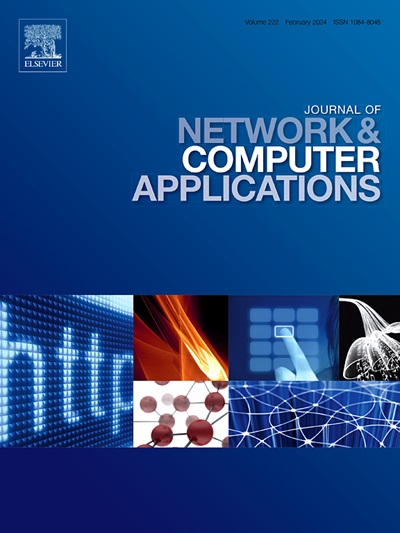高效的物联网隐私保护ML:针对非iid数据的基于集群的分离联邦学习方案
IF 7.7
2区 计算机科学
Q1 COMPUTER SCIENCE, HARDWARE & ARCHITECTURE
引用次数: 0
摘要
在本文中,我们提出了一种解决方案,以解决物联网环境中使用SplitFed架构进行模型训练时客户端资源能力变化带来的挑战,同时不损害用户隐私。联邦学习(FL)和分裂学习(SL)是旨在维护分布式机器学习训练中的隐私的技术。虽然FL通常提供更快的训练,但它要求客户训练整个神经网络模型,这对于资源有限的物联网设备可能不可行。此外,FL的性能受到客户端数据分布的严重影响,并且难以处理非独立和同分布(non-IID)数据。同时,SL将训练的一部分卸载到服务器上,使弱设备能够通过只训练模型的一部分来参与。但是,由于服务器和客户端之间的强制同步,SL执行速度较慢。结合FL和SL可以减轻每种方法的局限性,但也会引入新的挑战。例如,将FL的并行性集成到SL中会带来诸如非iid数据和掉队的问题,其中较快的设备必须等待较慢的设备完成其任务。为了应对这些挑战,我们提出了一种新的两阶段集群方案:第一阶段通过基于权重对非iid客户端进行分组来解决这些问题,而第二阶段将具有类似功能的客户端集群起来,以确保更快的客户端不必为较慢的客户端等待过多时间。为了进一步优化我们的方法,我们开发了一个多目标客户选择解决方案,该解决方案使用遗传算法根据他们的模型贡献和资源可用性为每个培训轮选择最合适的客户。我们的实验评估证明了我们的方法的优越性,与几个基准相比,在更短的时间内实现了更高的准确性。本文章由计算机程序翻译,如有差异,请以英文原文为准。
Efficient privacy-preserving ML for IoT: Cluster-based split federated learning scheme for non-IID data
In this paper, we propose a solution to address the challenges of varying client resource capabilities in the IoT environment when using the SplitFed architecture for training models without compromising user privacy. Federated Learning (FL) and Split Learning (SL) are technologies designed to maintain privacy in distributed machine learning training. While FL generally offers faster training, it requires clients to train the entire neural network model, which may not be feasible for resource-limited IoT devices. Additionally, FL’s performance is heavily impacted by client data distribution and struggles with non-Independent and Identically Distributed (non-IID) data. In parallel, SL offloads part of the training to a server, enabling weak devices to participate by training only portions of the model. However, SL performs slower due to forced synchronization between the server and clients. Combining FL and SL can mitigate each approach’s limitations but also introduce new challenges. For instance, integrating FL’s parallelism into SL brings issues such as non-IID data and stragglers, where faster devices must wait for slower ones to complete their tasks. To address these challenges, we propose a novel two-stage clustering scheme: the first stage addresses non-IID clients by grouping them based on their weights, while the second stage clusters clients with similar capabilities to ensure that faster clients do not have to wait excessively for slower ones. To further optimize our approach, we develop a multi-objective client selection solution, which is solved using a genetic algorithm to select the most suitable clients for each training round based on their model contribution and resource availability. Our experimental evaluations demonstrate the superiority of our approach, achieving higher accuracy in less time compared to several benchmarks.
求助全文
通过发布文献求助,成功后即可免费获取论文全文。
去求助
来源期刊

Journal of Network and Computer Applications
工程技术-计算机:跨学科应用
CiteScore
21.50
自引率
3.40%
发文量
142
审稿时长
37 days
期刊介绍:
The Journal of Network and Computer Applications welcomes research contributions, surveys, and notes in all areas relating to computer networks and applications thereof. Sample topics include new design techniques, interesting or novel applications, components or standards; computer networks with tools such as WWW; emerging standards for internet protocols; Wireless networks; Mobile Computing; emerging computing models such as cloud computing, grid computing; applications of networked systems for remote collaboration and telemedicine, etc. The journal is abstracted and indexed in Scopus, Engineering Index, Web of Science, Science Citation Index Expanded and INSPEC.
 求助内容:
求助内容: 应助结果提醒方式:
应助结果提醒方式:


